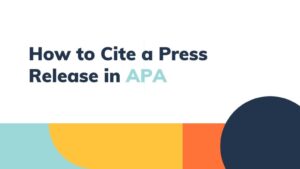Agile techniques have become quite popular because of their capacity to improve adaptability, efficiency, and cooperation. Scrum is one of the most well-liked and frequently utilised Agile frameworks. The importance of Scrum Tools grows as Agile teams aim for smoother processes and increased productivity. In this blog, we’ll explore how to choose the ideal Scrum tool for your Agile team while considering crucial elements like Scrum Certification and the wide variety of solutions on the market.
Table of Contents
ToggleTable of Content
- Understanding the Significance of Scrum Tools
- The Role of Scrum Certification
- Factors to Consider When Choosing a Scrum Tool
- Exploring the Array of Scrum Tools
- Conclusion
Understanding the Significance of Scrum Tools
Before delving into the technicalities of choosing the appropriate Scrum tool, it’s critical to comprehend the purpose that these tools fulfill in the Agile environment. Software programmes called “Scrum tools” were developed to make using Scrum methods simpler. They offer tools that make communication, collaboration, and project management easier. These systems’ objectives include more transparency, better team coordination, and efficient task and progress tracking.
Factors to Consider When Choosing a Scrum Tool
- When selecting any tool, a user-friendly interface is crucial. The tool should be easy to use so that team members may quickly become accustomed to it and utilize its features without requiring extensive training.
- Effective cooperation and communication are the foundation of agile methodologies. Look for systems with features like real-time messaging, discussion boards, and comment threads to facilitate easy information exchange among team members.
- Agile teams employ a range of procedures and techniques. A good Scrum tool should be adaptable so teams may modify it to suit their requirements.
- One of the core elements of Scrum is tracking the progress of tasks and projects. A tool should clearly understand how current work, sprint development, and overall project progress are progressing.
- Today’s technology ecosystem does not support autonomous tool operation. Ensure that the Scrum tool you select can smoothly communicate data with other software applications used by your team.
- Data-driven decision-making is crucial for Agile teams. Look for solutions that offer comprehensive reporting and analytics capabilities to help your team better understand performance and possible development areas.
- As your Agile team grows, the technology should be able to accommodate an increase in workload and user demands. The technology’s capacity to scale ensures it will continue supporting larger teams and projects.
The Role of Scrum Certification
Scrum certification is highly prized. Certification, which not only attests to a professional’s mastery of Scrum practises but also illustrates their commitment to upholding Agile values. When choosing a Scrum tool, it is critical to consider compatibility with Scrum certification. A solution that follows the Scrum principles can help simplify workflows and provide Scrum practitioners with the support they need to be successful.
Exploring the Array of Scrum Tools
The market offers various Scrum options, each catering to a different team size, project complexity, and budgetary constraint. The most popular options include Jira, Trello, Asana, Monday.com, and Microsoft Azure DevOps. When analysing these tools and contrasting them with your team’s particular needs, keep the factors above in mind.
Conclusion
It’s crucial to take your time when deciding which Scrum tool is best for your Agile team. Your decision on a solution can significantly impact how effective, cooperative, and successful your team is as a whole. By considering factors like Scrum certification compliance, ease of use, collaboration features, customisation possibilities, integration capabilities, and scalability, you can narrow down your options and find the best solution to fit your Agile practices. Your team can thrive in producing high-quality results in a continuously changing environment by adapting to the proper Scrum tool when the Agile landscape changes.



















